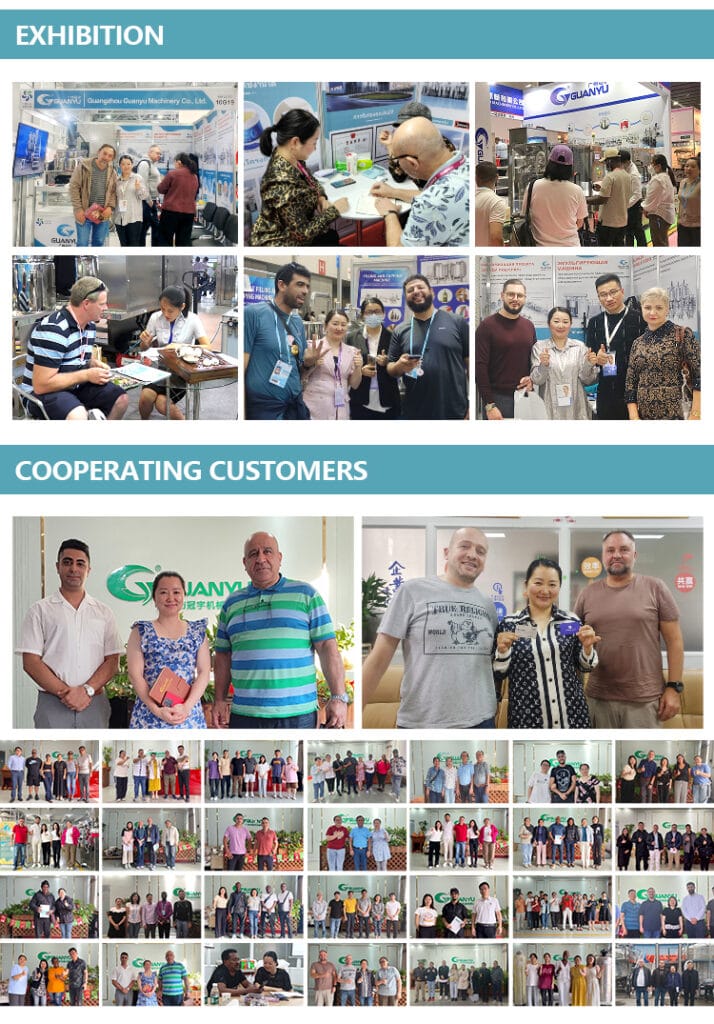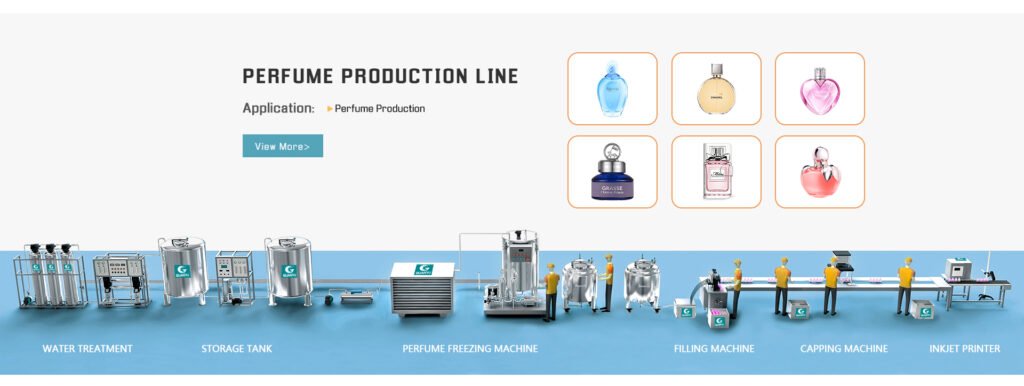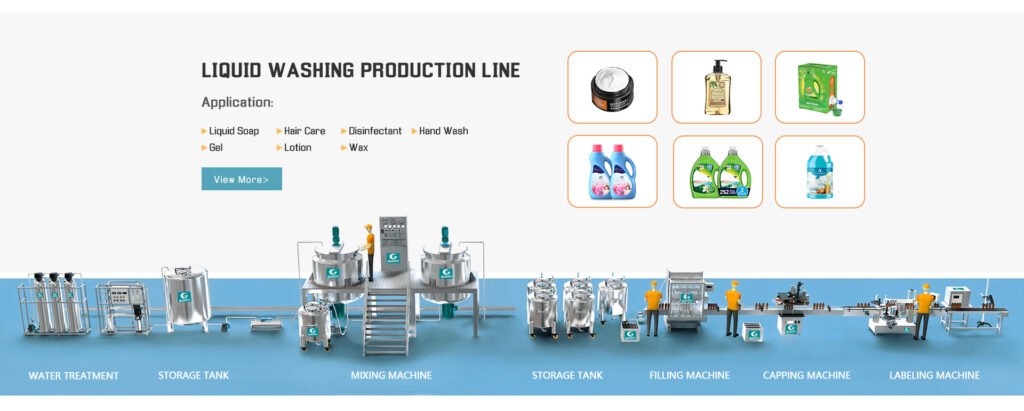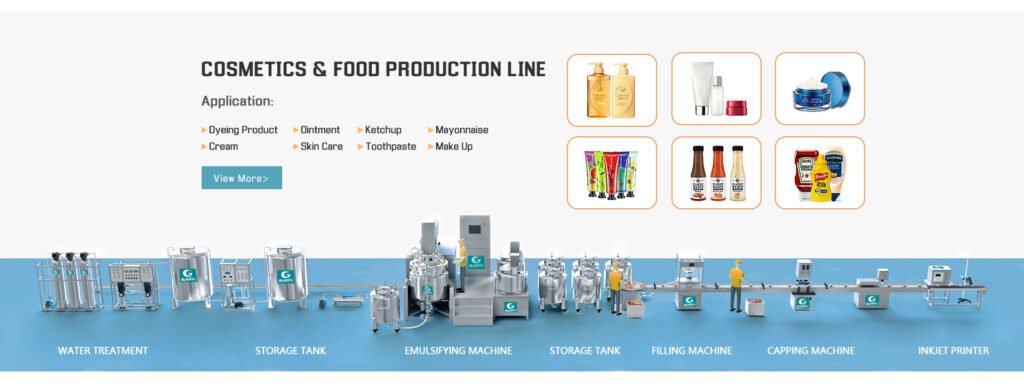Condensed milk is a rich, thick, and sweet dairy product used in a variety of desserts, drinks, and baked goods. It’s produced by evaporating water from milk and adding sugar, resulting in a shelf-stable product with a long storage life. The manufacturing process of condensed milk is carefully controlled to ensure quality, consistencia, y seguridad. Here’s a detailed look at how condensed milk is made, from selecting the right milk to the final packaging stages.

Key Ingredients in Condensed Milk
The ingredients in condensed milk are simple yet carefully selected to ensure quality and flavor:
- Fresh Milk: High-quality, fresh cow’s milk is typically used. The milk is the base of the product and provides the rich, creamy flavor and essential nutrients.
- Sugar: Sugar is added both to sweeten the product and to act as a preservative. In sweetened condensed milk, sugar makes up about 40-45% of the product, which helps prevent bacterial growth and extends shelf life.
- Stabilizers (opcional): Some manufacturers add stabilizers to ensure a smooth texture and to prevent crystallization or separation over time.
Step-by-Step Condensed Milk Manufacturing Process
Producing condense milk on an industrial scale involves several key steps, each ensuring the milk is properly concentrated, sweetened, and sterilized to meet quality standards.
1. Milk Selection and Quality Control
The process begins with selecting fresh, high-quality milk. The milk must meet strict quality criteria to ensure it is free of contaminants, has the right fat content, and is fresh. Quality checks are performed for:
- Fat Content: Milk with a higher fat content results in creamier condensed milk.
- Bacterial Count: The milk is tested for microbial safety to ensure it’s safe for consumption.
- Purity and Freshness: Checks for additives or contaminants are conducted to maintain product integrity.
Once approved, the milk is stored in refrigerated tanks until it’s ready for processing.
2. Preheating the Milk
Before further processing, the milk is preheated to around 85°C (185°F) for a short time. This initial heating step has several purposes:
- Destroys Harmful Bacteria: It kills any microorganisms present, ensuring the milk is safe to consume.
- Improves Concentration Efficiency: Preheating also helps remove dissolved gases, which makes it easier to concentrate the milk later.
- Prevents Separation: This heating step reduces the risk of fat separation during the evaporation process.
3. Evaporating Water from the Milk
The key step in condensed milk production is evaporation, where about 60% of the water content is removed from the milk. This process is typically done in a vacuum evaporator.
In a vacuum evaporator, the boiling point of milk is reduced by creating a low-pressure environment, allowing water to evaporate at lower temperatures (around 60°C or 140°F). Lower temperatures prevent the milk from scorching, preserve nutrients, and maintain the product’s natural flavor. This process continues until the milk reaches the desired concentration.
4. Adding Sugar
After evaporation, sugar is added to the concentrated milk. The amount of sugar varies depending on the desired sweetness level, but in standard sweetened condensed milk, sugar usually makes up 40-45% of the product by weight.
The addition of sugar serves two main purposes:
- Sweetening: It gives the condensed milk its characteristic sweet flavor.
- Preservation: The high sugar content helps prevent microbial growth by creating a high osmotic pressure, which inhibits bacteria and mold.
The sugar is mixed thoroughly to ensure it dissolves completely in the milk. This creates a homogeneous mixture that will not crystallize or separate during storage.
5. Homogenization
After adding sugar, the milk undergoes homogeneización. Homogenization is the process of breaking down fat molecules to prevent them from separating from the liquid, ensuring a smooth, uniform texture.
In this step, the milk is forced through a homogenizer, which applies high pressure to break down the fat particles. This results in a creamy, consistent product that will stay stable over time. Homogenization is particularly important for creating condensed milk with a smooth, pleasant mouthfeel.
6. Enfriamiento
The hot, sweetened, and homogenized milk mixture is then cooled down gradually to prevent crystallization. Rapid cooling is essential to avoid sugar crystallization, which would affect the texture and consistency of the condensed milk.
Typically, the milk is cooled in a controlled manner to around 20-25°C (68-77°F) using specialized cooling equipment. This step also helps stabilize the milk before packaging, ensuring that it retains its smooth and creamy texture.
7. Quality Testing
After cooling, the condensed milk undergoes various quality tests to ensure it meets industry standards. Common tests include:
- Viscosity Check: Ensures the product has the right thickness, which is crucial for consistency.
- Taste and Color: The milk is tested for flavor and color to ensure it meets the manufacturer’s quality standards. The ideal condensed milk has a slightly caramelized flavor and a creamy, off-white color.
- Microbial Testing: Samples are tested for bacterial contamination to ensure the product is safe and shelf-stable.
- Sugar Concentration: The sugar content is measured to confirm it aligns with the desired sweetness level.
Quality control is crucial to ensure that each batch meets regulatory standards and customer expectations.
8. Embalaje
Once quality control checks are completed, the condensed milk is ready for packaging. Condensed milk is typically packaged in sterilized cans, but it can also be filled into squeeze bottles or cartons, depending on the manufacturer and market preferences.
The packaging process is done in a sterile environment to prevent contamination. Canning involves filling the condensed milk into cans, which are then sealed to create an airtight environment. This helps extend the product’s shelf life and ensures it remains safe for long-term storage.
After packaging, each container is labeled and batch-coded for traceability, allowing manufacturers to track production details in case of recalls or quality issues.
9. Sterilization (Optional for Certain Markets)
In some regions, condensed milk undergoes additional sterilization after packaging to extend its shelf life further. This process, known as retort sterilization, involves heating the sealed cans at high temperatures to kill any remaining bacteria. Retort sterilization ensures that the condensed milk remains safe and stable even under extended storage.
Recomendado Guanyu Mixers in Condensed Milk Production
Vacuum Homogenizer Condensed Milk Mixer

- Versatile Solution: Guanyu Vacuum Homogenizer Condensed Milk Mixer Machine stands as the ultimate solution for crafting a wide spectrum of condensed milk formulations.
- Enriched Ingredients: From smooth-textured to those with small particulates, this versatile equipment allows you to create condensed milk enriched with diverse ingredients such as natural components, aceites, spices, and powders.
- Precision: This precision ensures you achieve your desired flavor profile with every batch.
- Meticulous Control: The Vacuum Homogenizer Condensed Milk Mixer can be meticulously controlled to align with your specific mixing requirements, including managing shear rate and heat treatment, all to ensure the desired consistency of the final product.
- Enhanced Quality: The vacuum feature enhances product quality by efficiently distributing powder ingredients throughout the condensed milk mixing process.
Types of Condensed Milk
Condensed milk comes in a few different forms, depending on sugar content and processing:
- Sweetened Condensed Milk: This is the most common type, containing added sugar for sweetness and preservation. It’s used in baking, desserts, y bebidas.
- Unsweetened Condensed Milk (Evaporated Milk): This type has no added sugar and is made by simply evaporating about 60% of the water from the milk. It’s often used in savory dishes and recipes where sweetness is not desired.
- Low-Fat or Skimmed Condensed Milk: For health-conscious consumers, some manufacturers produce condensed milk with lower fat content by using skimmed or low-fat milk.
Advantages of Condensed Milk
Condensed milk has several benefits, both for manufacturers and consumers:
- Long Shelf Life: The high sugar content (in sweetened versions) and low water content make condensed milk shelf-stable, meaning it can be stored without refrigeration for extended periods.
- Versatilidad: Condensed milk is highly versatile, used in everything from desserts to coffee. It serves as a thickener, sweetener, and base for various recipes.
- Nutrient-Rich: Condensed milk retains the nutrients of regular milk, including calcium, protein, and vitamins, making it a rich addition to recipes.
- Rentable: Due to its concentrated form, condensed milk offers a high-calorie density, making it a valuable food source for recipes where creamy, sweet flavor is desired.
Maquinaria Co. de Guangzhou Guanyu., Limitado: Más de dos décadas de excelencia

Fundado en 1997, Maquinaria Co. de Guangzhou Guanyu., Limitado ha pasado más de dos décadas perfeccionando el diseño, desarrollo, y fabricación de maquinaria de alta calidad y líneas de producción. Nuestro enfoque principal es servir al productos cosméticos, alimento, e industrias farmacéuticas, Proporcionar soluciones de producción integrales que satisfagan las diversas necesidades de nuestra clientela global.
Nuestro éxito se basa en los principios de innovación, calidad, y satisfacción del cliente. Ofrecemos soluciones de extremo a extremo, Desde consultoría y personalización de equipos hasta instalación de ingeniería y soporte postventa. Nuestra dedicación al avance tecnológico y el servicio superior nos ha convertido en un socio de confianza para las empresas de todo el mundo..
Soluciones únicas: Desde consultoría hasta personalización
Uno de nuestros diferenciadores clave es nuestra capacidad de ofrecer soluciones únicas para nuestros clientes. Desde la consulta inicial hasta la instalación final, Nos aseguramos de que cada paso del proceso se adapte a las necesidades específicas del cliente.. En el centro de nuestras soluciones están Tecnologías alemanas de Fluko e Ika, dos de los principales nombres de la industria. Sus tecnologías avanzadas forman la columna vertebral de nuestra maquinaria, Garantizar la precisión, eficiencia, y durabilidad.
Nuestro enfoque único se combina consultante, personalización del equipo, e instalación de ingeniería, haciendo que sea más fácil para las empresas alcanzar sus objetivos de producción. Hemos ayudado con éxito a numerosas empresas nacionales e internacionales conocidas a optimizar sus procesos de producción., aumentar la eficiencia, e impulsar la innovación. Ofreciendo el Líneas de producción de extremo a extremo más completas en la industria de la maquinaria, Podemos satisfacer las necesidades diferenciadas de los fabricantes a nivel mundial mientras mantenemos el ritmo rápido de innovación.
Ya sea que se trate de una producción a pequeña escala para nicho de mercado o fabricación a gran escala para la distribución de masas, Nuestras soluciones se pueden adaptar para adaptarse a los requisitos únicos de cualquier negocio.. Nuestros clientes pueden concentrarse en expandir su alcance del mercado y mantenerse por delante de los competidores., Mientras nos encargamos de sus necesidades de producción con nuestras soluciones innovadoras y flexibles..




Conclusión
The manufacturing process of condensed milk involves several carefully controlled steps, from milk selection and evaporation to homogenization, quality testing, and packaging. Each stage is crucial for achieving the rich, smooth texture and long shelf life that consumers expect from this popular product.
By selecting high-quality ingredients and following precise production steps, manufacturers produce condensed milk that is safe, delicious, and versatile for various culinary applications. Whether used in baking, desserts, or beverages, condensed milk has earned its place as a staple ingredient in kitchens around the world.

BWER is Iraq’s go-to provider for weighbridges, ensuring durability, exactitud, and cost-efficiency in all weighing solutions, backed by exceptional customer support and maintenance services.
Tu artículo me ayudó mucho, ¿Hay más contenido relacionado?? Gracias!
No creo que el título de tu artículo coincida con el contenido jajaja. Es una broma, Principalmente porque tenía algunas dudas después de leer el artículo..
Gracias por compartir. Me preocupa que me falta ideas creativas. Es tu artículo lo que me llena de esperanza. Gracias. Pero, Tengo una pregunta, me puedes ayudar? https://accounts.binance.com/pt-PT/register?ref=DB40ITMB
Tu artículo me ayudó mucho, ¿Hay más contenido relacionado?? Gracias!
¿Puedes ser más específico sobre el contenido de tu artículo?? Después de leerlo, Todavía tengo algunas dudas. Espero que puedas ayudarme.
¿Puedes ser más específico sobre el contenido de tu artículo?? Después de leerlo, Todavía tengo algunas dudas. Espero que puedas ayudarme.
¿Puedes ser más específico sobre el contenido de tu artículo?? Después de leerlo, Todavía tengo algunas dudas. Espero que puedas ayudarme.
Tu artículo me ayudó mucho, ¿Hay más contenido relacionado?? Gracias!
Gracias por compartir. Me preocupa que me falta ideas creativas. Es tu artículo lo que me llena de esperanza. Gracias. Pero, Tengo una pregunta, me puedes ayudar?
Tu artículo me ayudó mucho, ¿Hay más contenido relacionado?? Gracias!
Tu artículo me ayudó mucho, ¿Hay más contenido relacionado?? Gracias!
Tu artículo me ayudó mucho, ¿Hay más contenido relacionado?? Gracias!
Tu punto de vista me llamó la atención y fue muy interesante. Gracias. Tengo una pregunta para ti.
No creo que el título de tu artículo coincida con el contenido jajaja. Es una broma, Principalmente porque tenía algunas dudas después de leer el artículo..
¿Puedes ser más específico sobre el contenido de tu artículo?? Después de leerlo, Todavía tengo algunas dudas. Espero que puedas ayudarme.
Tu punto de vista me llamó la atención y fue muy interesante. Gracias. Tengo una pregunta para ti. http://8089949.cryptostarthome.com
Gracias, tu artículo me sorprendió, hay un punto de vista tan excelente. Gracias por compartir, aprendí mucho.
Tu punto de vista me llamó la atención y fue muy interesante. Gracias. Tengo una pregunta para ti.
Gracias por compartir. Leí muchas de tus publicaciones de blog, Frío, Tu blog es muy bueno.
Gracias por compartir. Leí muchas de tus publicaciones de blog, Frío, Tu blog es muy bueno.
Tu punto de vista me llamó la atención y fue muy interesante. Gracias. Tengo una pregunta para ti.
No creo que el título de tu artículo coincida con el contenido jajaja. Es una broma, Principalmente porque tenía algunas dudas después de leer el artículo..
Tu artículo me ayudó mucho, ¿Hay más contenido relacionado?? Gracias!
Tu punto de vista me llamó la atención y fue muy interesante. Gracias. Tengo una pregunta para ti.
Gracias por compartir. Me preocupa que me falta ideas creativas. Es tu artículo lo que me llena de esperanza. Gracias. Pero, Tengo una pregunta, me puedes ayudar? https://www.binance.com/es/register?ref=T7KCZASX
Tu punto de vista me llamó la atención y fue muy interesante. Gracias. Tengo una pregunta para ti.
Gracias por compartir. Me preocupa que me falta ideas creativas. Es tu artículo lo que me llena de esperanza. Gracias. Pero, Tengo una pregunta, me puedes ayudar? https://www.binance.info/id/register?ref=GJY4VW8W
¿Puedes ser más específico sobre el contenido de tu artículo?? Después de leerlo, Todavía tengo algunas dudas. Espero que puedas ayudarme. https://www.binance.info/fr/register-person?ref=GJY4VW8W
Gracias por compartir. Me preocupa que me falta ideas creativas. Es tu artículo lo que me llena de esperanza. Gracias. Pero, Tengo una pregunta, me puedes ayudar?
¿Puedes ser más específico sobre el contenido de tu artículo?? Después de leerlo, Todavía tengo algunas dudas. Espero que puedas ayudarme.
No creo que el título de tu artículo coincida con el contenido jajaja. Es una broma, Principalmente porque tenía algunas dudas después de leer el artículo..
Tu punto de vista me llamó la atención y fue muy interesante. Gracias. Tengo una pregunta para ti. https://www.binance.info/ur/register?ref=WTOZ531Y
Gracias por compartir. Me preocupa que me falta ideas creativas. Es tu artículo lo que me llena de esperanza. Gracias. Pero, Tengo una pregunta, me puedes ayudar?
¿Puedes ser más específico sobre el contenido de tu artículo?? Después de leerlo, Todavía tengo algunas dudas. Espero que puedas ayudarme. Рестраця на Binance
Gracias por compartir. Me preocupa que me falta ideas creativas. Es tu artículo lo que me llena de esperanza. Gracias. Pero, Tengo una pregunta, me puedes ayudar?
Gracias por compartir. Me preocupa que me falta ideas creativas. Es tu artículo lo que me llena de esperanza. Gracias. Pero, Tengo una pregunta, me puedes ayudar?
No creo que el título de tu artículo coincida con el contenido jajaja. Es una broma, Principalmente porque tenía algunas dudas después de leer el artículo..
Gracias por compartir. Leí muchas de tus publicaciones de blog, Frío, Tu blog es muy bueno.
Tu punto de vista me llamó la atención y fue muy interesante. Gracias. Tengo una pregunta para ti.
Tu artículo me ayudó mucho, ¿Hay más contenido relacionado?? Gracias!
No creo que el título de tu artículo coincida con el contenido jajaja. Es una broma, Principalmente porque tenía algunas dudas después de leer el artículo..
Tu artículo me ayudó mucho, ¿Hay más contenido relacionado?? Gracias!
Tu punto de vista me llamó la atención y fue muy interesante. Gracias. Tengo una pregunta para ti.
Gracias por compartir. Leí muchas de tus publicaciones de blog, Frío, Tu blog es muy bueno.
Tu artículo me ayudó mucho, ¿Hay más contenido relacionado?? Gracias! https://www.binance.info/es/register?ref=T7KCZASX
Gracias por compartir. Me preocupa que me falta ideas creativas. Es tu artículo lo que me llena de esperanza. Gracias. Pero, Tengo una pregunta, me puedes ayudar?
No creo que el título de tu artículo coincida con el contenido jajaja. Es una broma, Principalmente porque tenía algunas dudas después de leer el artículo.. https://accounts.binance.com/en/register?ref=JHQQKNKN
Gracias por compartir. Leí muchas de tus publicaciones de blog, Frío, Tu blog es muy bueno.
Gracias por compartir. Me preocupa que me falta ideas creativas. Es tu artículo lo que me llena de esperanza. Gracias. Pero, Tengo una pregunta, me puedes ayudar? https://www.binance.com/tr/register?ref=MST5ZREF
¿Puedes ser más específico sobre el contenido de tu artículo?? Después de leerlo, Todavía tengo algunas dudas. Espero que puedas ayudarme. https://www.binance.info/register?ref=IXBIAFVY
Reading your article helped me a lot and I agree with you. But I still have some doubts, can you clarify for me? I’ll keep an eye out for your answers. https://accounts.binance.info/zh-CN/register-person?ref=WFZUU6SI
Tu punto de vista me llamó la atención y fue muy interesante. Gracias. Tengo una pregunta para ti.
Gracias por compartir. Me preocupa que me falta ideas creativas. Es tu artículo lo que me llena de esperanza. Gracias. Pero, Tengo una pregunta, me puedes ayudar?
¿Puedes ser más específico sobre el contenido de tu artículo?? Después de leerlo, Todavía tengo algunas dudas. Espero que puedas ayudarme. https://accounts.binance.com/es-AR/register-person?ref=UT2YTZSU
Entonces, I stumbled upon 98wn a while ago. Not gonna lie, it’s pretty basic but it did offer few decent games that I haven’t seen elsewhere. Worth checking to grab some unique experiences at 98wn.
¿Puedes ser más específico sobre el contenido de tu artículo?? Después de leerlo, Todavía tengo algunas dudas. Espero que puedas ayudarme. https://accounts.binance.com/register-person?ref=IHJUI7TF
**backbiome**
backbiome is a naturally crafted, research-backed daily supplement formulated to gently relieve back tension and soothe sciatic discomfort.
Tu punto de vista me llamó la atención y fue muy interesante. Gracias. Tengo una pregunta para ti.
**vivalis**
vivalis is a premium natural formula created to help men feel stronger, more energetic, and more confident every day.
**glycomute**
glycomute is a natural nutritional formula carefully created to nurture healthy blood sugar levels and support overall metabolic performance.
**balmorex pro**
balmorex is an exceptional solution for individuals who suffer from chronic joint pain and muscle aches.
**aquasculpt**
aquasculpt is a revolutionary supplement crafted to aid weight management by naturally accelerating metabolism
**nervecalm**
nervecalm is a high-quality nutritional supplement crafted to promote nerve wellness, ease chronic discomfort, and boost everyday vitality.
**synadentix**
synadentix is a dental health supplement created to nourish and protect your teeth and gums with a targeted combination of natural ingredients
**prostavive**
prostavive Maintaining prostate health is crucial for mens overall wellness, especially as they grow older.
**alpha boost**
alpha boost for men, feeling strong, energized, and confident is closely tied to overall quality of life. Sin embargo, with age, stress, and daily demands
**yu sleep**
yusleep is a gentle, nano-enhanced nightly blend designed to help you drift off quickly, stay asleep longer, and wake feeling clear
**prodentim**
prodentim is a distinctive oral-care formula that pairs targeted probiotics with plant-based ingredients to encourage strong teeth
**gl pro**
glpro is a natural dietary supplement designed to promote balanced blood sugar levels and curb sugar cravings.
**mindvault**
mindvault is a premium cognitive support formula created for adults 45+.
**nitric boost**
nitric boost is a daily wellness blend formulated to elevate vitality and support overall performance.
**femipro**
femipro is a dietary supplement developed as a natural remedy for women facing bladder control issues and seeking to improve their urinary health.
**vertiaid**
vertiaid is a high-quality, natural formula created to support stable balance, enhance mental sharpness, and alleviate feelings of dizziness
**vitrafoxin**
vitrafoxin is a premium brain enhancement formula crafted with natural ingredients to promote clear thinking, memory retention, and long-lasting mental energy.
**glucore**
glucore is a nutritional supplement that is given to patients daily to assist in maintaining healthy blood sugar and metabolic rates.
**sugarmute**
sugarmute is a science-guided nutritional supplement created to help maintain balanced blood sugar while supporting steady energy and mental clarity
**prime biome**
The natural cycle of skin cell renewal plays a vital role in maintaining a healthy and youthful appearance by shedding old cells and generating new ones.
**hepatoburn**
hepatoburn is a high-quality, plant-forward dietary blend created to nourish liver function, encourage a healthy metabolic rhythm, and support the bodys natural fat-processing pathways.